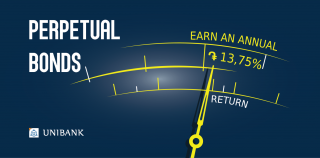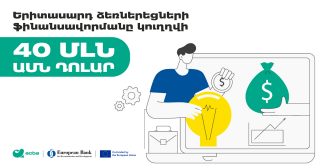
Logo, Brand and Tourism

Vasken Kalayjian, CEO and Brand Architect of American GK Brand, a few days ago on his LinkedIn profile introduced Armenia’s brand—logo and slogan. The process of Armenia’s branding generated in 2012, upon the proposal of the Council of National Competitiveness Foundation of Armenia. In February 2014 National Competitiveness Foundation of Armenia signed a document with American GK Brand on creation of Armenia’s national brand, i.e. slogan and logo were to be developed, by which Armenia should be introduced to the world.
Currently the brand is ready. However it’s a question: will it become Armenia’s brand or not? It became a subject of heated discussion in social networks, and judging from posts and comments overwhelming majority of Armenians didn’t like it.
Both the idea of having a national brand and slogan, as well as the way of its implementation, money paid for that (according to some information it cost USD 400 thousand) have undergone criticism.
Many were totally against the idea of having country’s brand and logo, saying the country is not a private organization, the country is introduced to the world with one logo—coat of arms. Others consider that logo is necessary, however, not in this form. Facebook users simply distorted the slogan and the logo, from choice of colors and font, to “the sun, resembling a shrimp,” until “the story is just beginning” slogan, which is not definitely accepted.
And the most heated discussion developed around the sum. For the many paying USD 400 thousand is simply a senseless lavishness. In fairness, it should be noted that USD 400 thousand for the development of branding on the level of the country isn’t a big sum. For instance, to develop its current logo BBC spent USD 1.8million in 1997. And oil giant British Petroleum paid USD 211 million to Landor Associates for rebranding in 2008.
It’s another question: how necessary is it for the time being and what benefit will it give, when our pennies are counted? However, on the other hand, it’s not for the first time, that immense sums are allocated for PR purposes on account of taxpayers, productivity of which is strictly suspicious.
The documentary “Armenia, the land of Noah” was introduced in 2009, for which, according to different sources about half million dollars have been paid. This 52-minute documentary was made by Spanish “Transglobe” and “Buzz business” and pursued the purpose to reflect attractions of Armenia, Armenian culture and tourism. It was stated that more than 450 million viewers of around 200 countries of the world will have the possibility to get more detailed information on Armenia.
Was this movie screened in 200 countries? Did at least half of 450 million tourists watch it? What effect did it have?—Nobody knows. People making the decision on spending money for that purpose, surely, will say that after 2009 number of tourists visiting Armenia has grown despite the crisis. However, which part of growth is conditioned by that movie? Was the money spent for it equivalent to the benefit it gave?—No serious calculations were provided.
It’s worth reminding a small episode, which edifies how those responsible for the economic bloc may be mistaken. After 1 March 2008 the then Minister of Economy Nerses Yeritsyan invited a press conference, purpose of which was to prove that March 1 has negatively affected and would affect the number of tourists visiting Armenia. He was enumerating with concern: 2 tourist groups refused to visit Armenia from France, 10 from Italy, 13 from Germany, 3 from the USA, and one respectively from Japan, Netherlands and Denmark.
Ignoring the officially declared state of emergency, the Minister was directing main criticism to internet media sources, stating that “unilateral news” spread by them alienates tourists, who have just recognized Armenia. Former president Robert Kocharyan was also touching upon cancellation of tour packages. A short period later official statistics concluded tourism indices, and it turned out that in the period of January-March, as compared to the same period of previous year, number of tourists has grown by 27%. And on a yearly basis (2008 as compared to 2007) number of tourists grew by 9.4%.
Besides the movie and footages, we also had numerous exhibitions, ordered lots of analysis, established and dissolved lots of organizations on tourism, adopted a concept on tourism development.
Now we’re introducing Armenia’s national brand…Coincidentally, in the same period Porsche shows Khor Virap against the background of Mt. Ararat, and writes in the title—Kinnaur, India. The point is not in deliberate or unintended mistake of the team preparing the Porsche ad. The point is this footage appeared on Youtube in April 2016, and until now we didn’t make the organization apologize. It could at least have been removed from Youtube.
Another instance: a few days ago I was writing an article on tourists visiting from Russia and Armenia to Turkey. I failed to find the number of Armenia’s citizens visiting Turkey through ongoing and pervious years from Armenian sources. There were concrete data neither in the database of RA National Statistical Service, nor in the Ministry of Economy and other state and private structures on tourism. Finally, I found necessary data on the website of Turkish Ministry of Culture and Tourism.
They were introduced in such a complete form, operative and convenient to find information and to develop it. It was even possible to see the type of transport used by the tourist in the preferred period.
And if you try to find distribution of tourists visiting Armenia by country, you’ll find with great difficulty, however, not by the preferred format, not flexible and not operative.
Proper economic policy may be implemented only on the basis of full information, and in our country even official information is incomplete and scattered. And despite this, tourism is growing (they say).
“With its development temps and results tourism is among the branches of the country recording more dynamic development,” the website of the Ministry of economy informs. Yes, number of visitors to Armenia has decreased by 1% from 2014, however, in the first quarter of 2016 we recorded 8.6% growth.
And if we compare it with 2002, number of annual visits grew 7.4 times (number of visitors to Armenia in 2002 comprised 162 thousand, and 1.2 million in 2014).
However, particularly touching upon the indices for tourism, it’s mandatory to compare them with the neighbors of the region, as we, first and foremost, are competing with them.
Flow of tourists in the period of 2002-2014 grew 3.75 times (less than in case of Armenia). However, regarding absolute index of the flow of tourists, Azerbaijan is a step forward: in 2014 the country received 2 million 160 thousand tourists.
And comparison with Georgia gives ground for deep concern. In the period of 2002-2014 annual flow of tourists visiting to Georgia grew 18.5 times, growing from 300 thousand to 5.5 million. And today it yet keeps growing.
Moreover, Georgian tourism started to develop after 2004 and rapidly grew particularly in post-crisis period—2010-2013. It’s not a secret either that Armenia’s citizens comprise a rather big specific gravity of tourists visiting Georgia.
Of course, the sea plays its role as well. However, the sea existed in 2000 as well, when Georgia wasn’t so popular as a tourism direction. Reasons for success should be sought for in other place.
And the factor of country’s branding…We’re sure that even 1% of the citizens of Armenia and other countries doesn’t know what Georgia’s logo looks like (we’re not even sure on its existence).
By Babken Tunyan























